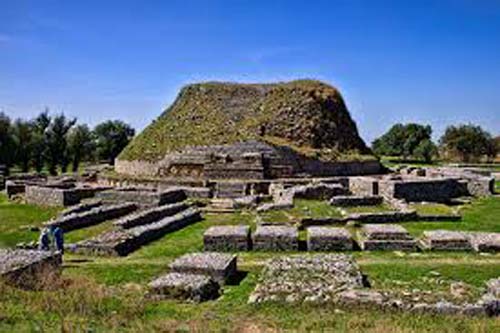
Solid steps urged to restore lost glory of ancient Taxila University
Tahir Pervez Gondal
Rawalpindi: Pakistan being the melting pot of various civilizations has different shades and colors taken from the rich cultural heritage of Gandhara, Indus, Mehrgarh, Arabs, Afghans, Mongols, Moguls, Persians, Turks and British spanning over thousands of years.
The climatic conditions and different geographical regions from sea coast to deserts, plains to snow clad mountains have further signified the Pakistani culture. The foreign tourists find varying architectural landscapes, languages, dresses and food as they move from south to north or from east to west in the country.
The University of Ancient Taxila, once the greatest learning center of Gandhara Civilization in the region, was widely acknowledged as the first example of higher learning in world history. The city is one of the most important Buddhist Archeological sites in the world.
It was designated a UNESCO World Heritage Site in 1980, located near the twin cities of Rawalpindi and Islamabad. According to historians, the ancient university was set up around 5 to 6 century (BC) and had continued to attract students from around the world until its destruction in the 5th century.
Taxila as a symbol of diversity should be given due attention for restoring its lost glory. Therefore, the Buddhist Archaeological sites of Dharmarajika Complex and stupa can once again be made the center of excellence in higher education for setting up an international standard university in it. According to experts, Taxila has great potential for religious and educational tourism and it could be made an international education city for higher education.
Director Archives Department Punjab, Maqsood Ahmed said that Taxila formerly Takshashila was also described in the Buddhist Jataka tales written in Sri Lanka around 5th century. In this text, Taxila has been mentioned as the capital of the kingdom of Gandhara and a great learning center. He said that the Chinese travellers like Fa Hian (Faxian) and Huien Tsang (XuanZang) also spoke of Takshashila in their writings. Many people visit Taxila today to experience the wonders of an ancient civilization, he added.
Maqsood Ahmed said, “The Muslim world, once a hub of intellectual wonders, has lost its glory, particularly in science and technology but, Taxila, if focused and uplifted with an aim to promote science and technology can be made a center of excellence to attract foreign students, particularly from the Sub-Continent, Central Asian and other countries.”
He said that the ancient university which was a centre for education and knowledge was established on the concept to create a space where bright philosophical and scientific minds could assemble for advance learning during the Achaemenid Empire.
He said that the oldest institution hosted debates, housed several libraries in its main premises and gave birth to towering scholars and intellectuals such as Kotliya Chankia; the advisor of the founder of the Mauryan empire; Charaka, the Indian “father of medicine”, one of the leading authorities in Ayurveda and the greatest 5th BCE Indian grammarian Pa?ini.
Maqsood said that the Persian conquest has given the Taxila University a cosmopolitan environment in which numerous cultures and ethnicities could exchange their knowledge, adding that the role of ancient Taxila University as a center of knowledge continued under the Maurya Empire and Greek rule (Indo-Greeks) in the 3rd and 2nd centuries BCE. He said that when the Alexander’s armies came to Punjab in the fourth century B.C., Takshashila had already developed a reputation as an important seat of learning.
Thus on his return, Alexander took many scholars from there with him to Greece. “The final blow, however, came from the Huns (also the destroyers of the Roman Empire) who, in the 5th century had razed the institution,” he added.
Abdul Nasir Khan, the library curator at Taxila museum said that the students had come here from all over the world including China, Babylon, Syria and Greece and Indian Sub-continent for getting education.
He said that subjects including science, mathematics, medicine, politics, warfare, astrology, astronomy, music, dance, religion, vedas, grammar, agriculture, surgery, commerce, futurology, and philosophy had been taught at the campus.
Around 10,500 students were enrolled at the age of 16 after they had completed their basic education at home and secondary education in the Ashrams while the entrance exam to Takshashila was very difficult and hardly three out of every 10 students were used to be given admission after test”, he added.
